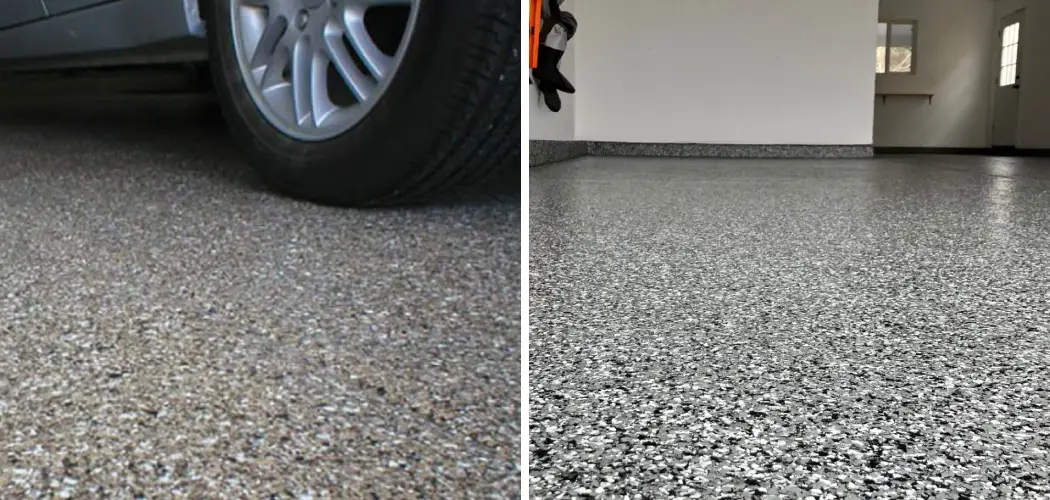Cleaning your polyaspartic garage floor is an essential part of maintaining a clean and organized home. Not only does it improve the appearance of your garage, but it also helps to prolong the lifespan of your flooring. In this section, we will discuss some reasons why you should learn to clean polyaspartic garage floor.
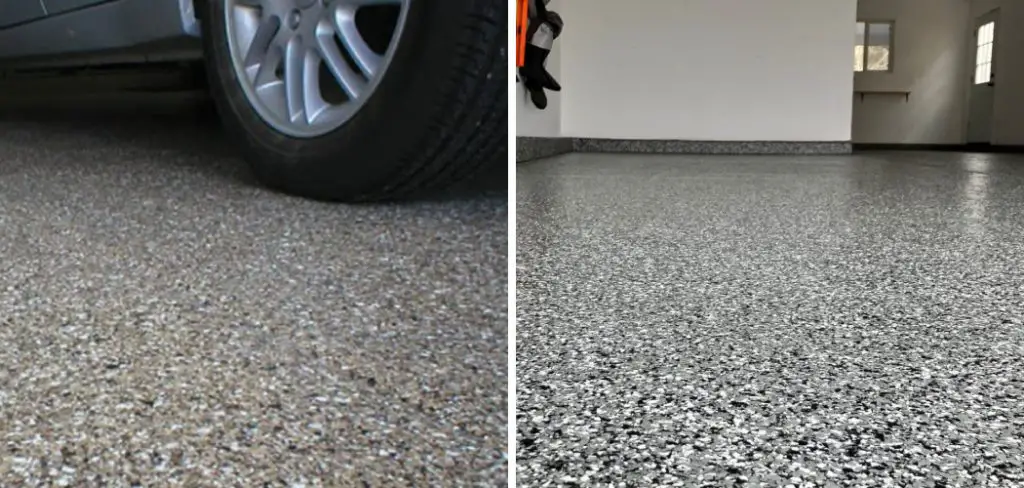
The main advantage of using polyaspartic garage floor coatings is its durability. Compared to other types of flooring such as epoxy, vinyl or carpet, polyaspartic floors can withstand heavy foot traffic and are resistant to abrasion and chemicals.
This makes them ideal for use in garages where the floors are subjected to constant wear and tear from vehicles, tools, oil spills, and other substances. In this blog post, You will learn in detail how to clean polyaspartic garage floor.
Step-by-step Instructions for How to Clean Polyaspartic Garage Floor
Step 1: Inspect the Floor
First and foremost, it’s important to inspect your polyaspartic garage floor before beginning the cleaning process. Look for any stains, spills or debris that may need special attention. Using a broom or dust mop, sweep the entire surface of your garage floor to remove any loose debris such as dirt, leaves or rocks.
Step 2: Prepare Your Cleaning Solution
Mix a solution of warm water and mild detergent in a bucket. You can also use a specialized garage floor cleaner specifically designed for polyaspartic floors. Using a mop or sponge, apply the cleaning solution to the entire surface of your garage floor. Be sure to cover all areas, including corners and edges.
Step 3: Scrub the Floor
Using a scrub brush or soft-bristled push broom, gently scrub the surface of your garage floor. This will help to loosen any tough stains or stuck-on debris. Once you have thoroughly scrubbed the entire floor, use a hose or pressure washer to rinse off the cleaning solution and any remaining debris.

Step 4: Dry the Floor
Using a squeegee or large towel, remove any excess water from your garage floor. You can also use a fan or open windows to help speed up the drying process. If there are any tough stains that were not removed during the initial cleaning, you can spot clean them using a specialized garage floor cleaner or a mixture of warm water and white vinegar.
Step 5: Apply Sealant (Optional)
To protect your polyaspartic garage floor from future stains and spills, you may choose to apply a sealant. Be sure to follow the manufacturer’s instructions for application and drying time. To keep your polyaspartic garage floor looking clean and pristine, it is important to regularly sweep and mop the surface. Avoid using harsh chemicals or abrasive tools that could damage the sealant.
By following these steps, your polyaspartic garage floor will stay clean and in top condition for years to come. With proper maintenance, it can continue to provide a durable and attractive flooring option for your garage space.
Precautions for How to Clean Polyaspartic Garage Floor
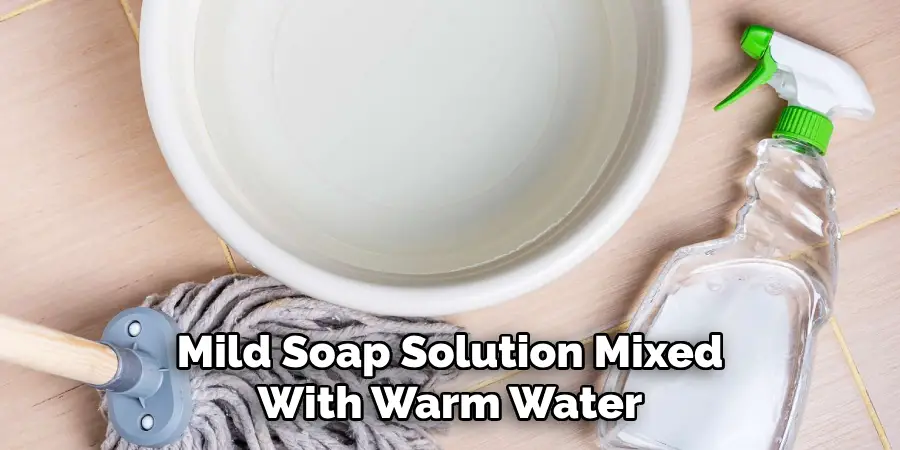
- Avoid Using Harsh Chemicals: When cleaning a polyaspartic garage floor, it is important to avoid using harsh chemicals such as bleach, ammonia, or acidic cleaners. These substances can damage the surface of the floor and cause discoloration or even erosion.
- Use a Mild Soap Solution: Instead of using harsh chemicals, opt for a mild soap solution mixed with warm water. This will effectively clean the floor without causing any damage.
- Use a Soft-bristle Brush: When scrubbing the floor, use a soft-bristle brush to avoid scratching or damaging the surface. Hard bristles can also cause tiny scratches that can accumulate over time and make the floor look dull and worn out.
- Test Cleaners in Inconspicuous Areas: Before using any cleaner on the entire floor, it is important to test it in a small, inconspicuous area first. This will help determine if there are any adverse reactions or discoloration before applying it to the rest of the floor.
- Avoid Using Excessive Water: While cleaning the polyaspartic garage floor, make sure not to use excessive amounts of water. Too much water can seep into the cracks and joints of the floor, causing it to weaken over time.
- Use a Wet-dry Vacuum: To remove excess water or cleaning solution from the floor, use a wet-dry vacuum. This will ensure that there is no standing water left on the floor, preventing any potential damage.
- Allow Proper Ventilation: When cleaning the garage floor, make sure to keep the area well-ventilated. This will help prevent any buildup of harmful fumes from cleaning products and ensure a safe environment for you to work in.
By following these precautions, you can effectively clean your polyaspartic garage floor without causing any damage. Remember to always read the manufacturer’s instructions and use appropriate cleaning products to maintain the beauty and durability of your floor.
Importance of Cleaning Polyaspartic Garage Floor
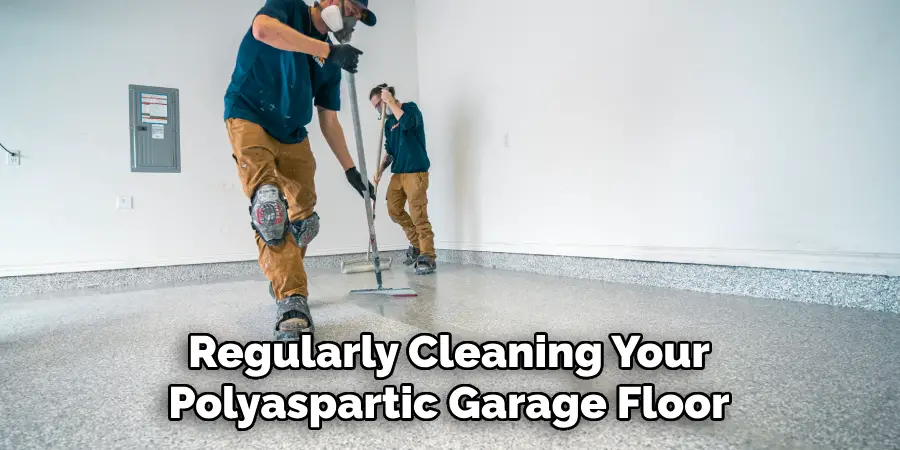
- Maintains the Appearance: Regularly cleaning your polyaspartic garage floor will help maintain its appearance and keep it looking new. This is especially important if you use your garage for other purposes such as storing vehicles or as a workshop.
- Prevents Stains and Discoloration: Without regular cleaning, dirt, grime, and spills can accumulate on the floor and cause stains and discoloration. Cleaning the floor regularly will prevent this from happening.
- Increases Durability: Polyaspartic garage floors are known for their durability, but regular cleaning can further enhance their longevity. Proper maintenance and cleaning will help preserve the strength and quality of the floor.
- Prevents Slips and Falls: A clean polyaspartic garage floor is less likely to have any slippery spots, reducing the risk of slips and falls. This is especially important if the garage is used frequently or has heavy foot traffic.
- Promotes a Healthy Environment: A clean floor means fewer chances of mold, mildew, or bacteria buildup. This promotes a healthier environment for you and your family.
- Easier Maintenance: Regular cleaning of your polyaspartic garage floor makes it easier to maintain in the long run. It prevents the accumulation of dirt and grime, which can become difficult to clean if left for extended periods.
- Increases Property Value: A well-maintained polyaspartic garage floor adds value to your property. If you ever decide to sell your home, a clean and durable garage floor will be a selling point for potential buyers. So, regular cleaning will not only benefit you in the short term but also increase the value of your property in the long run.
Cleaning a polyaspartic garage floor is an important task that should not be overlooked. By following these safety tips and understanding the importance of regular cleaning, you can ensure that your garage floor remains in top condition for years to come. Remember, a clean floor not only looks good but also contributes to a safe and healthy environment for you and your family.
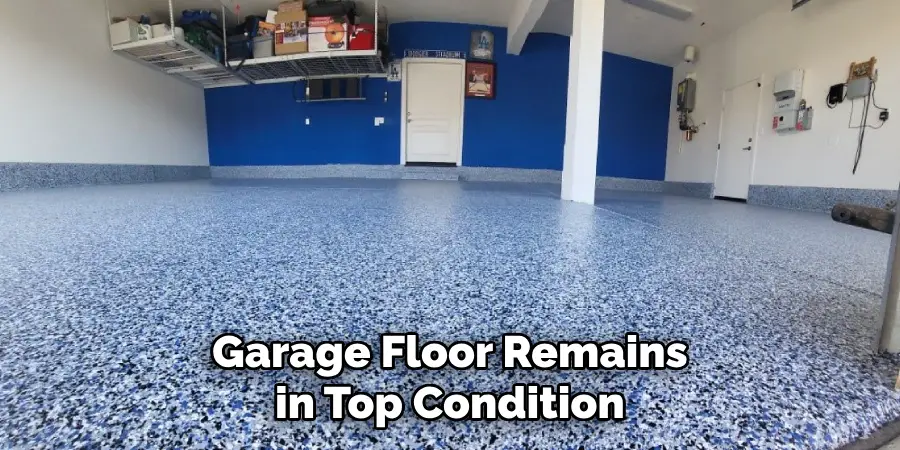
Benefits of Cleaning Polyaspartic Garage Floor
Polyaspartic garage floors have become increasingly popular over the years as an alternative to traditional concrete floors. They offer a wide range of benefits that make them a preferred choice for homeowners and commercial spaces alike. In this article, we will explore seven key benefits of cleaning polyaspartic garage floors.
1. Durability
One of the biggest advantages of polyaspartic garage floors is their durability. They are known for their exceptional strength and ability to withstand heavy traffic, impact, and chemical spills. This makes them a great choice for high-traffic areas such as garages, workshops, and warehouses.
2. Easy Maintenance
Polyaspartic garage floors require minimal maintenance compared to other flooring options. They are resistant to stains, scratches, and moisture, making them easy to clean and maintain. All you need is a damp mop or a mild cleaning solution to keep your floors looking like new.
3. Quick Installation
Polyaspartic garage floors can be installed quickly, usually within a day or two. Unlike traditional concrete floors that require several days of curing time, polyaspartic floors are ready for use within 24 hours of installation. This means less downtime and inconvenience for homeowners and businesses.
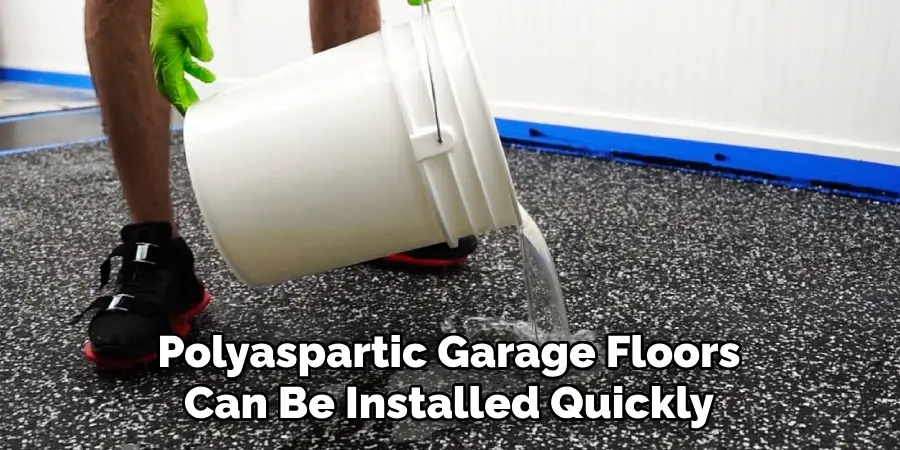
4. Versatility
Polyaspartic garage floors offer a wide range of design options to choose from. They can be customized with different colors, patterns, and textures to create a unique look that complements the overall aesthetic of your space. Additionally, they can be used in various settings including residential, commercial, and industrial spaces.
5. Slip-Resistance
Safety is always a top priority when it comes to flooring options. Polyaspartic garage floors provide excellent traction and are slip-resistant, making them a safe choice for high-traffic areas. This is especially important in garages where spills and wet floors are common.
6. Longevity
Polyaspartic garage floors are designed to last for many years with proper maintenance. They do not chip, crack, or peel easily like traditional concrete floors, saving homeowners and businesses from costly repairs or replacements in the long run.
7. Eco-Friendly
Polyaspartic garage floors are a sustainable flooring option as they produce very little waste during installation and have a long lifespan. They also do not require the use of harsh chemicals for cleaning, making them an environmentally friendly choice.
From durability and easy maintenance to versatility and sustainability, there are numerous benefits to choosing polyaspartic garage floors over traditional concrete floors. Whether you’re looking for a long-lasting and low-maintenance option for your home or a durable and visually appealing choice for your commercial space, polyaspartic floors are definitely worth considering.
Common Applications for Cleaning Polyaspartic Garage Floor
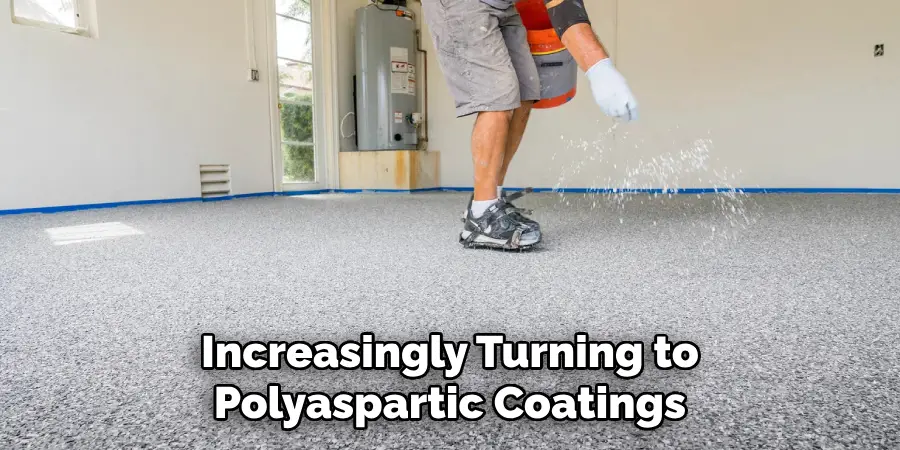
- Residential Garages – One of the most common applications for cleaning polyaspartic garage floors is in residential garages. Homeowners are increasingly turning to polyaspartic coatings as they offer a durable, long-lasting solution for protecting and beautifying their garage floor.
- Commercial Garages – Polyaspartic garage floor coatings are also commonly used in commercial garages, such as those found in car dealerships, repair shops, and parking lots. These high-traffic areas require a tough coating that can withstand heavy use and frequent cleaning.
- Industrial Facilities – In addition to garage floors, polyaspartic coatings are also suitable for use in industrial facilities where chemical spills, heavy machinery, and vehicle traffic are common. The chemical resistance and durability of polyaspartic coatings make them an ideal choice for these types of environments.
- Retail Spaces – Retail spaces, such as supermarkets, malls, and department stores, often have high levels of foot traffic and require regular cleaning. Polyaspartic garage floor coatings can be applied in retail spaces to provide a seamless, low-maintenance flooring option that can withstand heavy use.
- Residential Basements – Similar to residential garages, polyaspartic coatings are also suitable for use in basements. They offer a moisture-resistant surface that is easy to clean and maintain, making them a popular choice for homeowners looking to upgrade their basement flooring.
- Restaurants – Another common application for cleaning polyaspartic garage floors is in restaurants. These high-traffic establishments require durable flooring that can withstand spills, stains, and heavy use. Polyaspartic coatings are also resistant to bacteria growth, making them a hygienic choice for restaurant floors.
- Public Facilities – Finally, polyaspartic garage floor coatings are also used in various public facilities such as schools, hospitals, and government buildings. These spaces need flooring that is easy to clean, low-maintenance, and can withstand heavy use. Polyaspartic coatings provide a cost-effective solution for these types of facilities.
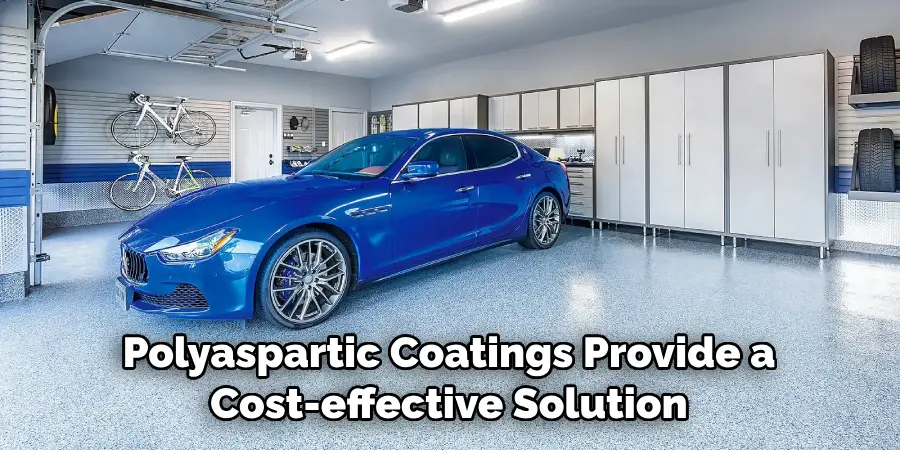
In addition to these common applications, polyaspartic garage floor coatings can also be used in other settings such as workshops, showrooms, and even outdoor patios or walkways.
This versatility makes polyaspartic coatings a popular choice for both residential and commercial spaces. With its many benefits, it’s no wonder that polyaspartic garage floor coatings are becoming increasingly popular among homeowners and businesses alike.
Maintaining and Extending the Life of Polyaspartic Garage Floors
Polyaspartic garage floors are becoming increasingly popular due to their durability and low maintenance requirements. However, like any other flooring material, they require proper care and maintenance to maintain their aesthetic appeal and functionality. In this section, we will discuss some tips for maintaining and extending the life of your polyaspartic garage floors.
1. Regular Cleaning
One of the simplest ways to keep your polyaspartic garage floors in good condition is by regularly cleaning them. Sweep or vacuum the floor daily to remove any dust, dirt or debris that may scratch the surface. You can also use a mop with warm water and a mild detergent to remove any stubborn stains or spills.
2. Avoid Harsh Chemicals
Polyaspartic garage floors are resistant to most chemicals, but it is still advisable to avoid using harsh cleaning solutions. Ammonia-based cleaners, bleach or acidic substances can damage the surface of the floor and cause discoloration. Stick to mild detergents or specialized polyaspartic floor cleaners for best results.
3. Use Mats and Rugs
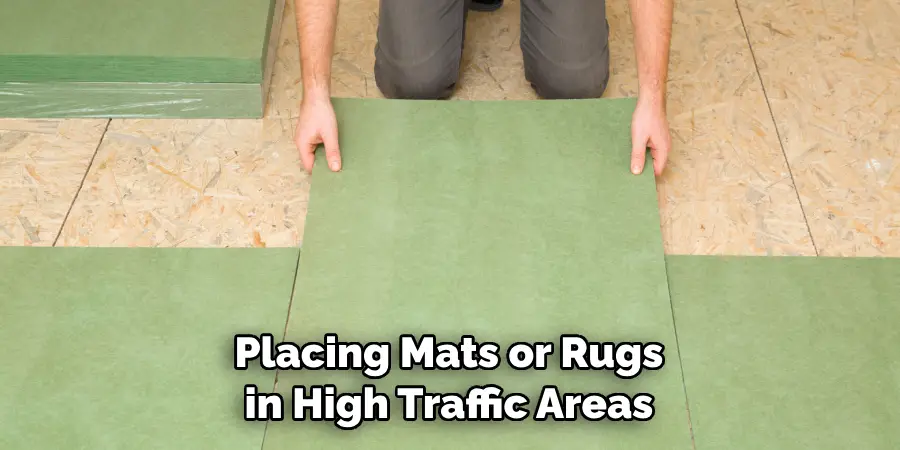
Placing mats or rugs in high traffic areas can help prevent scratches and wear on your polyaspartic garage floors. They also act as a barrier against dirt and debris, keeping the floor clean for longer periods of time.
4. Address Spills Immediately
Accidents happen, and spills are inevitable in a garage setting. However, it is essential to address any spills as soon as possible to avoid any potential damage to the floor. Wipe up any spills immediately with a clean cloth or paper towel, and use a mild detergent for more stubborn stains.
5. Avoid High Impact Activities
While polyaspartic garage floors are known for their durability, they can still be damaged by high impact activities such as dropping heavy objects or dragging sharp items across the surface. To extend the life of your floors, avoid these types of activities and use caution when moving heavy equipment or tools.
6. Schedule Regular Maintenance
Polyaspartic garage floors require minimal maintenance compared to other flooring materials, but it is still essential to schedule regular maintenance check-ups. A professional can identify any potential issues and provide recommendations for repairs or touch-ups if necessary.
By following these tips, you can ensure that your polyaspartic garage floors remain in top condition for years to come. With proper care and maintenance, they will continue to provide a functional and aesthetically pleasing flooring option for your garage space.
Troubleshooting Common Cleaning Challenges for Cleaning Polyaspartic Garage Floor
Polyaspartic garage floors are durable, long-lasting and easy to maintain. However, like any other surface, they can present some challenges when it comes to cleaning. In this guide, we will discuss the common issues you might encounter while cleaning your polyaspartic garage floor and how to troubleshoot them.
1. Stains
Stains are a common problem for any type of flooring, and polyaspartic garage floors are no exception. The key is to act fast and clean up spills as soon as possible. If left untreated, stains can become permanent and difficult to remove.

For oil or grease stains, use a degreaser specifically designed for polyaspartic floors and let it sit for a few minutes before scrubbing with a stiff brush. For other types of stains, such as food or beverage spills, use a mild detergent and warm water to clean the affected area.
2. Tire marks
Tire marks are another common issue for polyaspartic garage floors, especially if you frequently park your car in the garage. The best way to remove tire marks is by using a heavy-duty degreaser and scrubbing with a stiff brush. For stubborn tire marks, you can also try using a pressure washer.
3. Dust and dirt
Due to its glossy finish, polyaspartic floors are prone to showing dust and dirt more than other types of flooring. To keep your floor looking clean and shiny, sweep or dust mop regularly to remove any dirt or debris. For a deeper clean, use a wet microfiber mop with a neutral pH cleaner.
4. Scratches
While polyaspartic floors are extremely durable, they can still get scratched from heavy objects being dragged across the surface. If you notice any scratches, use a touch-up kit or a clear polyaspartic topcoat to cover them up. It’s important to address scratches as soon as possible to prevent them from getting worse.
5. Chemical damage
Polyaspartic garage floors are resistant to most chemicals, but some harsh substances such as bleach or ammonia can cause damage if left on the surface for too long. If you accidentally spill a chemical on your floor, immediately wipe it up with water and a mild detergent.
6. Hazing or cloudiness
Sometimes, after cleaning and drying your polyaspartic floor, you may notice a hazy or cloudy appearance. This is usually caused by using too much cleaner or not rinsing thoroughly enough. To fix this issue, simply rinse the floor with clean water and dry with a microfiber cloth.
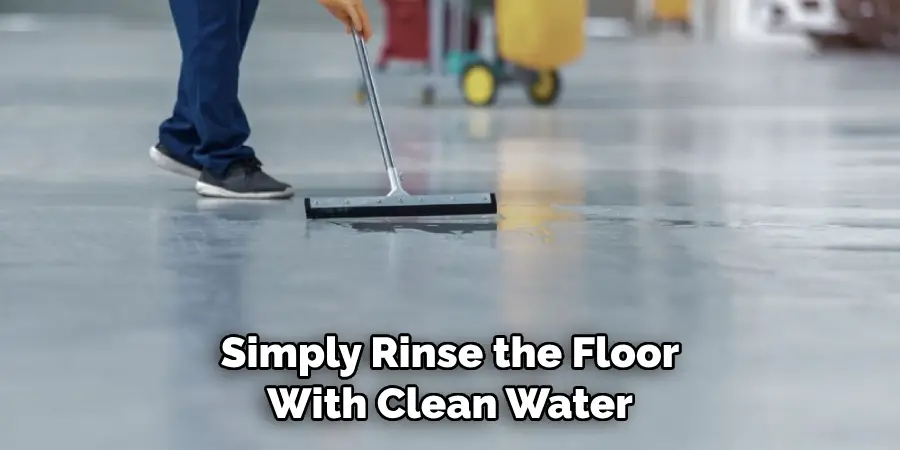
7. Bubbles or peeling
If your polyaspartic floor has bubbles or is peeling in certain areas, it could be caused by moisture trapped underneath the surface. To troubleshoot this issue, you may need to have a professional inspect and repair the affected area.
By following these troubleshooting tips and properly maintaining your floor, you can keep it looking clean, shiny and in excellent condition for years to come. So, enjoy your beautiful and durable polyaspartic garage floor without any worries.
Conclusion
In conclusion, maintaining and cleaning your polyaspartic garage floor is an essential part of prolonging its lifespan and keeping it looking new. By following the steps outlined in this blog, you can ensure that your garage floor remains in top condition for years to come.
Regularly sweeping or vacuuming your floor will help prevent any buildup of dirt and debris. It is also crucial to promptly clean up any spills or stains to prevent them from becoming permanent.
When it comes to deeper cleaning, using a mild detergent and warm water is recommended. I hope this article has been beneficial for learning how to clean polyaspartic garage floor. Make Sure the precautionary measures are followed chronologically.
I am Rick. I grew up helping my dad with his handyman service. I learned a lot from him about how to fix things, and also about how to work hard and take care of business. These days, I’m still into fixing things- only now, I’m doing it for a living.
I’m always looking for new ways to help people grow and develop. That’s why I have created this blog to share all my experience and knowledge so
that I can help people who are interested in DIY repair.

